Enhancing cognitive traits like mood, focus, and reasoning is the reason many consumers take supplements. In this fast-paced, competitive world, your brain is your body's prime real estate. Importantly, in our information economy, how well your brain functions and performs under stress can make or break your career.
That's where choline comes in.
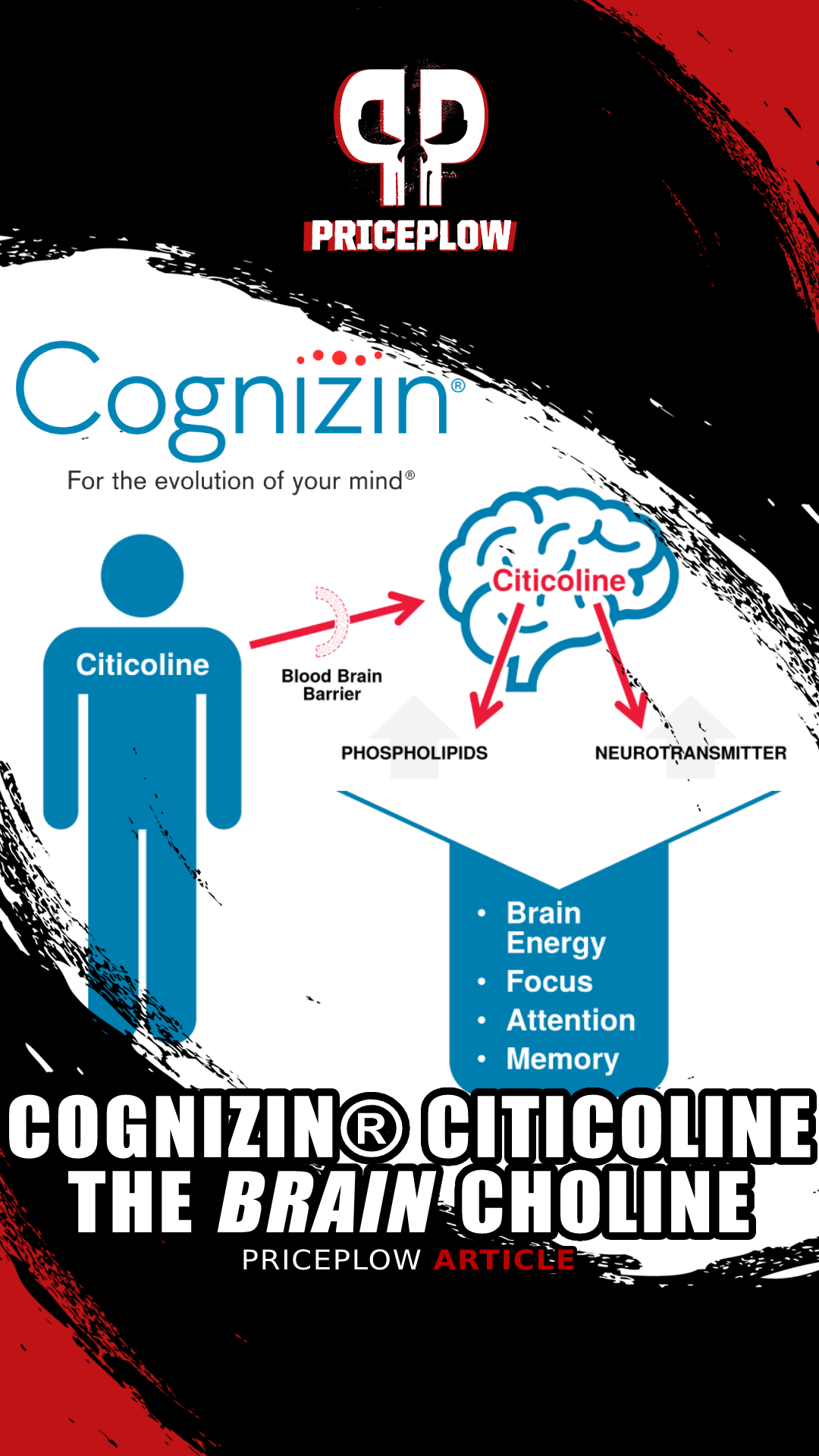
Cognizin® Citicoline is dubbed the The Brain Choline not just because it provides choline, but because it also supplies cytidine, which is also needed for the synthesis of phosphatidylcholine
Choline is an essential building block for the phospholipid bilayer membranes that enclose the contents of all your body's cells.[1] This alone makes it a crucial nutrient to obtain.
As it turns out, choline is a precursor to acetylcholine, a neurotransmitter that's centrally implicated in the processes of learning and memory consolidation.[2] Upregulating acetylcholine typically causes improvements in cognitive function, enhancing not only intellectual performance but also motor skills like balance and coordination.[3,4]
Choline Supplements as Nootropic Ingredients
This is why choline-based ingredients are known as nootropics in the dietary supplement world. There are several forms of choline on the market, but one has begun to separate itself from the pack, as it isn't just an ordinary choline source.
We're referring to Cognizin®, a patented and trademarked form of citicoline made and sold by Kyowa Hakko. Citicoline is the chemical combination of choline and the nucleotide molecule cytidine. It's scientifically known as cytidine diphosphate-choline (CDP-Choline) or cytidine 5'-diphosphocholine, but we'll just refer to it as citicoline.
On this blog and on social media, we've frequently commented how citicoline is a more experiential choline source, in that it can be felt and seems to provide a kick of dopamine. In this article, we explain how and why that's the case.
Brain Benefits of Citicoline
According to a 2006 research review, citicoline supplementation has been shown to:[5]
- Activate biosynthesis of phospholipids for neuronal membranes
- Speed up neural metabolism
- Upregulate neurotransmitters like dopamine, norepinephrine and acetylcholine[6]
- Protect neural tissue
- Attenuate age-related cognitive deficits
- Restore neuronal mitochondrial function
- Inhibit neurodegenerative apoptosis
- Increase neuroplasticity
On the other hand, choline deficiency can be catastrophic – it can lead to cognitive dysfunction, organ and muscle damage, and, more specifically, non-alcoholic fatty liver disease (NAFLD).[7]
Citicoline, cytidine, and phosphatidylcholine
As introduced above, Cognizin isn't just ordinary choline - it's the chemical combination of choline and the nucleotide cytidine, the latter of which provides its own additional support properties:
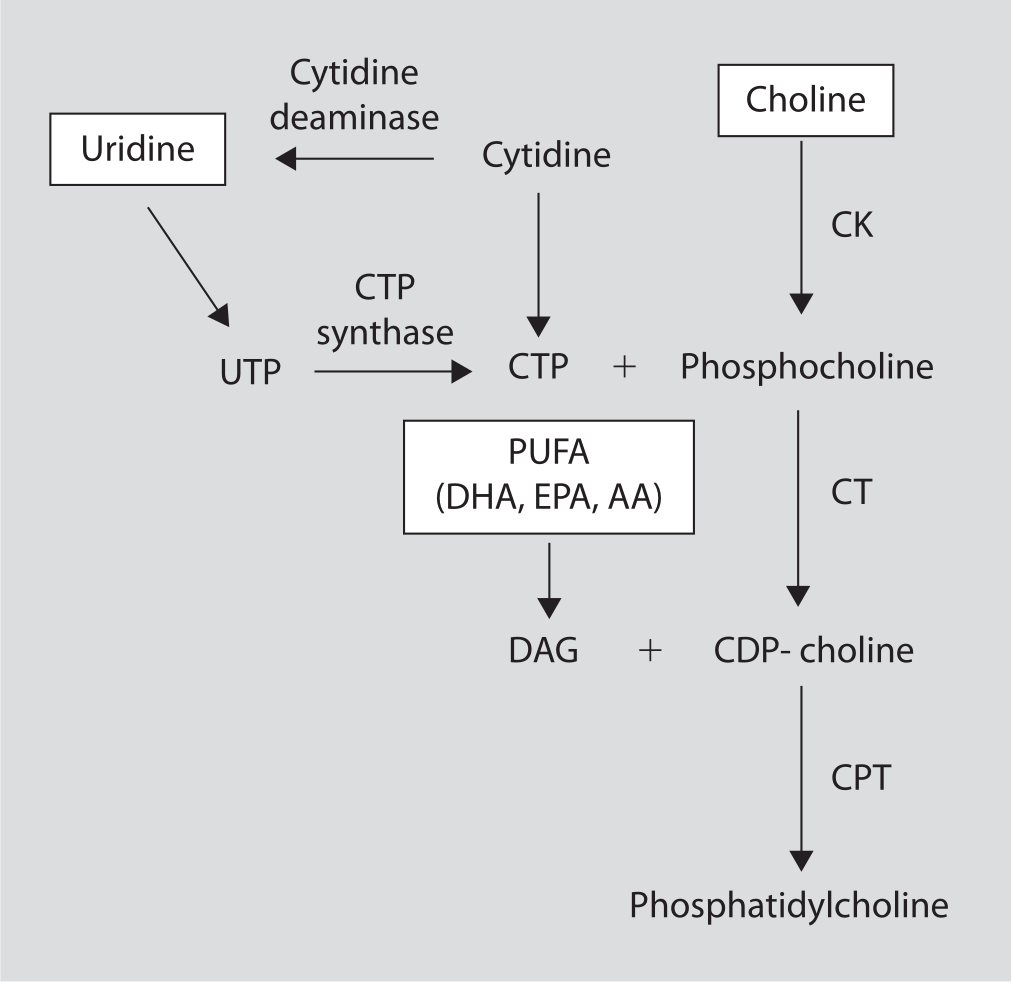
Both cytidine and choline are needed for the synthesis of phosphatidylcholine, a phospholipid with particular benefits for brain health.[8,9]
Both halves of the citicoline molecule — choline and cytidine — are required for the phosphatidylcholine (PC) synthesis.[8-11] Citicoline is the rate limiting step, however, so it's more important than just having both choline and cytidine -- you need citicoline in order to make PC. Taking citicoline can help increase your body's production of PC by supplying these two precursors.
Since PC is one of two major phospholipids your body incorporates into cellular membranes,[12] you can see how it should make sense to take citicoline instead of ordinary choline. While they're both forms of choline, only citicoline contains everything the body needs to make the phospholipids. Cytidine also seems to have some health benefits of its own. For example, one animal study found that supplementation with cytidine can alter the composition of gut bacteria and improve certain aspects of metabolic health, like blood lipid profile and liver function.[13]
Phospholipid synthesis: activity in the central nervous system
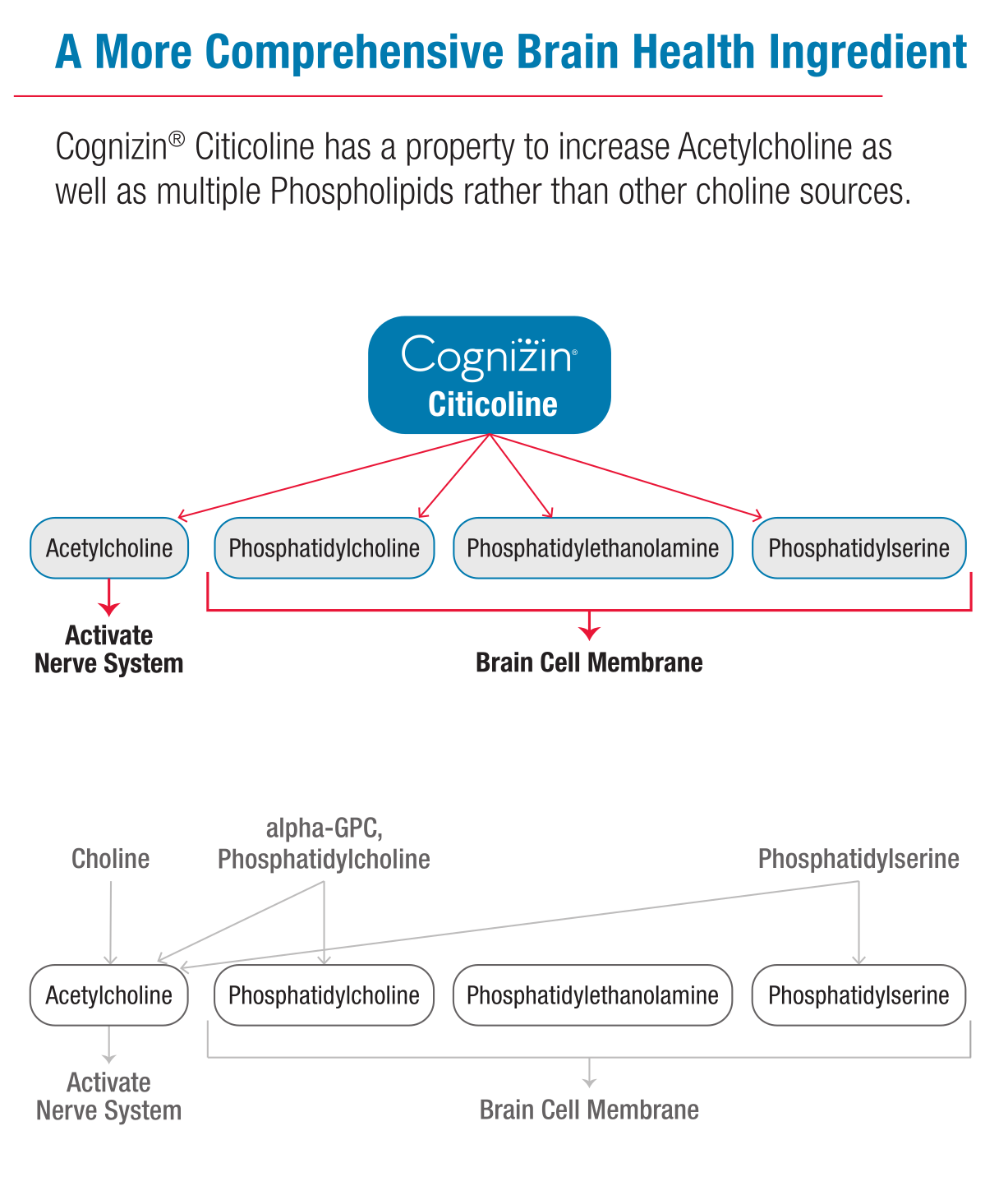
Only citicoline is able to promote both acetylcholine and the three brain cell membranes, phosphatidylcholine, phosphatidylethanolamine, and phosphatidylserine!
Perhaps more interesting is cytidine's ability to cross the blood-brain barrier, which gives it a high degree of activity in the central nervous system.[11] This property is likely the reason why citicoline is often billed as the most experiential nootropic form of choline. As we'll see, there's a ton of research showing that citicoline can have substantial benefits for brain health, above and beyond ordinary choline.
One important thing to note up front is that citicoline's natural availability creates a bottleneck in phosphatidylcholine synthesis.[14] In other words, your body's finite supply of citicoline limits the amount of PC it can produce on its own. Targeting the rate-limiting step of any metabolic process is usually the most effective strategy for optimizing it. This one little fact goes a long way toward explaining why the body of evidence behind citicoline supplementation for brain health is so strong.
Importantly, citicoline's effect on phospholipid synthesis in the human brain isn't just theoretical. A study from 2002 using MRI imaging on humans observed a significant increase in the phosphodiesters that are directly associated with PC synthesis.[15]
Dietary sources of cytidine?
Although a comprehensive quantitative analysis of the cytidine content in food is difficult to find, the foods usually suggested for cytidine intake – sweet potato, rocket salad, Mexican ground cherry, cinnamon[16] – are not particularly common in the American diet. And while it's hard to say definitively, given the state of research on this subject, we think this means that most people probably stand to benefit from cytidine-containing supplements like citicoline.
If, hypothetically, you weren't getting enough cytidine due to lack of the above foods in your diet, supplementing with ordinary choline still might not yield all the benefits you'd hope for. You can take all the choline you want, but without sufficient cytidine (or uridine, discussed below), the body can't convert much of that choline into the phospholipids it needs to maintain important cellular membranes.
Cytidine vs. uridine – citicoline boosts both
It's true that uridine is abundant in most common foods,[17] but refer back to our inset image – you can see there's an additional intermediary step in the conversion of uridine to phosphatidylcholine. Generally speaking, longer conversion pathways are less efficient, so we think it probably makes more sense to increase cytidine intake if you're trying to optimize your body's production of phospholipids.
That being said, supplementation with citicoline has been shown to effectively raise both blood cytidine[18] and blood uridine levels. In one study, a 2,000 milligram dose of citicoline increased uridine levels by about 100%.[19]
But an animal study found that a roughly equivalent dose (about ~1,600 milligrams if you do the human conversion) of citicoline caused a much larger increase in blood cytidine levels – an impressive 5.4-fold increase.[18]
Cognizin – Human Studies
Now that we've dispensed with a little background on the mechanisms of action behind citicoline supplementation, let's see what the research literature has to say about Cognizin's efficacy in human subjects. Note that we mention Cognizin here, because the researchers specifically used the trusted and tested ingredient:
-
Psychomotor Speed – Cognizin Study (2015)
Psychomotor speed is an important part of daily functioning. It's defined as the amount of time it takes to mentally and physically react to a stimulus. In other words, it's the speed of the connection between your mind and muscles. As psychomotor speed slows with age,[20] nutritional strategies can offset this decline and help us retain control of our physical environment in our advancing years.
Given the key role that neuronal cellular membranes play in cognitive function, it's plausible that citicoline could help improve psychomotor processing. That's exactly what a 2015 study in adolescent males examined.[6]
In this double-blind, randomized, placebo-controlled study, over the course of 28 days, 75 young men between the ages of 13 and 18 received either 250 milligrams citicoline, 500 milligrams citicoline, or a placebo. Note that the brand of citicoline used in this study was Cognizin.[6]
The researchers assessed the participants' psychomotor processing before and after the treatment period using the following tests:[6]
- Finger Tap Total Dominant Hand (FTDH)
- Finger Tap Total Non-Dominant Hand (FTNDH)
- Ruff 2&7 Speed
- Ruff 2&7 Accuracy
- CPT-II Detectability
- CPT-II Commission Errors
The finger tapping test entails the subject rapidly tapping their fingers on a surface.[21] The rapidity of the tapping – the number of taps in a given period of time – is taken as a proxy measure of psychomotor function. Although it may seem simplistic, this test is well-validated and routinely used in research (psychomotor deficits causes patients to finger tap more slowly over time).[22]
Ghost Gamer has an incredible 500 milligram dose of Cognizin that doubles as a great lower-stimulant pre-workout supplement or energy drink!
The Ruff 2&7 test is designed to measure selective attention. Subjects are given a sheet of random characters and instructed to cross out target characters (i.e., only cross out the number '2' or the letter 'Z') – similar to a word search. The person's speed and accuracy are used to indicate their ability to process information selectively.[23]
Finally, the CPT-II test measures the ability to sustain attention, and is also routinely used and trusted.[24]
Although the treatment group and the placebo group both saw gains in performance on these tests over the 28-day study period, the Cognizin group improved significantly more. For example, while the placebo group went from an average score of about 505 to a score of about 513 on the FTDH, the treatment group went from 480 to 518.[6] That's an effect size almost five times larger!
A similar result was observed in the Ruff 2&7 test. When it came to speed, the placebo group went from 84.04 to 96.79, while the treatment group went from 86.98 to 104.90.[6]
The effect sizes on these FTDH and Ruff 2&7 tests were substantial, and reflect an improvement in important capabilities.
-
Memory Function in Healthy Older Adults – Cognizin Study (2021)
Of course, aging is a major factor in cognitive decline, and we should mitigate it wherever we can. A 2021 randomized, double-blind, placebo-controlled study set out to examine the effects of Cognizin supplementation in 100 healthy adults between the ages of 50 and 85.[25]
By healthy, it is meant that the volunteers did not have cognitive deficits beyond what is expected for their age – prospective subjects with scores below a certain threshold on key cognitive tests were screened out of the study. So, this study really set out to test whether Cognizin could help manage normal cognitive aging.[25]
The subjects were randomly assigned to receive either a placebo, or 500 milligrams Cognizin daily. The treatment period lasted for 12 weeks, with cognitive testing taking place at the beginning and end of the study. Subjects were instructed to maintain their normal diet and lifestyle habits as much as possible, so as to avoid introducing any confounding variables.[25]
Analysis of the study results revealed that older adults taking Cognizin showed statistically significant improvements in visuospatial working memory (spatial span), episodic memory (paired associate test), and overall memory performance (composite memory).[25]
The study authors reported that the older adults taking Cognizin citicoline did significantly better on tests of visual-spatial working memory, episodic memory, and overall memory performance.[25]
Working memory is the amount of information you can juggle in your head at any given moment – it's the primary determinant of fluid intelligence.[26] Episodic memory is basically temporal-spatial sequential memory. It refers to one's ability to recall not only an object, but where and when it was encountered.[15]
Visual-spatial working memory was measured by the spatial span test, which shows subjects a spatial sequence – i.e., squares on a grid illuminated in a certain order – and subsequently asked to accurately recall. Episodic memory was measured by the paired associate test – learning to pair one test item with another and accurately recall the set of pairs.[25]
According to the authors of the study, the most likely mechanisms of action for the cognitive improvements are phosphatidylcholine upregulation and frontal lobe activation.[25]
As of 2023, the latest study performed on Cognizin® was published in 2021, showing improved memory in healthy older adults.[25]
If you'd like to learn more about this study, read more in our article titled "Research Study: Cognizin® Citicoline Improves Memory in Older Adults".
Another study published in 1996 also demonstrated improved verbal memory function in older individuals.[27]
-
Improved CPT-II Performance In Middle-Aged Women (2012)
In the previous study, the researchers found no significant performance difference between the placebo and Cognizin groups on the continuous performance test II (CPT-II), a test designed to measure one's ability to sustain attention.
However, earlier research from 2012 found something very different.
In this study, 60 healthy adult women between the ages of 40 and 60 were randomized to receive 250 milligrams citicoline, 500 milligrams citicoline, or placebo for 28 days.[28]
Here's how the study describes the CPT-II test:
"The CPT-II was completed on an IBM-compatible laptop computer. The task begins with a short practice exercise then proceeds into the full test, which lasts for 14 minutes. For both the practice test and the full test, participants are instructed to press the spacebar as quickly and as accurately as possible when any letter other than X appears on the screen. Letters appear on the computer screen 1 letter at a time for 250 milliseconds. Inter-stimulus intervals between letter displays vary between 1, 2, and 4 seconds. Measures that are provided by the CPT-II assessment include omission and commission errors. Omission errors occur when the participant does not respond when they should respond (i.e., not pressing the spacebar when a letter other than X appears), and commission errors occur when the participant fails to inhibit a response (i.e., pressing the spacebar when the letter X appears)."[28]
The basic idea behind the CPT-II test is that if your mind wanders – for example, if you press the spacebar when you shouldn't or don't press it when you should – it means you aren't actually paying attention to what's on the screen.
Cognizin significantly improved the ability of middle-aged women to sustain attention in the CPT-II test.[28]
So, with that in mind, it's encouraging that Cognizing significantly improved the women's performance on CPT-II. Omission errors dropped the most – exactly what we want to see in a supplement that's supposed to help people focus.
-
Improves Function of Neuronal Mitochondria (2008)
So, how exactly does Cognizin activate the frontal lobe? For the answer, we turn to an earlier study – one of the first conducted on Cognizin.
In this study, 16 neurologically and psychiatrically healthy participants, with an average age of 47, were randomized to either 500 milligrams Cognizin, 2,000 milligrams Cognizin, or a placebo. They took this treatment for six weeks.[29]
All participants were assessed using a magnetic resonance spectroscopy (MRS) scan of their brains, before and after treatment. An MRS is similar to an MRI, except instead of just modeling the physical structure of the brain, it also detects the chemical composition of brain tissue. The purpose of the MRS was to look for evidence of neuronal metabolic activity – byproducts of ATP hydrolysis, for example.
When the study authors analyzed the MRS data, they found that the Cognizin groups had significantly higher levels of phosphocreatine (PCr, +7%), beta-nucleotide triphosphate (b-NTP, +14%), and phosphoethanolamine (PE, +26%) – all of which, being high energy phosphate metabolites, indicate increased metabolic function, that is, mitochondrial function. Remember that high energy phosphate bonds are what store potential energy in the ATP molecule, so that's why higher levels of phosphate metabolites indicate more ATP hydrolysis, the process your cells use to actually consume the energy contained in ATP.[29]
The researchers also found lower levels of inorganic phosphate (Pi, -26%), which is also a sign of increased mitochondrial function. But what's interesting is they found lower levels of phosphatidylcholine (PC, -29%) and phosphoethanolamine (PE, -26%). This suggests increased phospholipid bilayer membrane synthesis and, in the case of lower PC, acetylcholine upregulation.[29]
We realize that's all very technical, but the takeaway from this study is that Cognizin is directly increasing cellular metabolism,[29] with a knock-on effect being improved cellular membrane health. Cellular energy manipulation has far-reaching effects on both cellular and tissue function, and is possibly the most fundamental mechanism of action behind Cognizin's nootropic effects.
A great summary of safety research and regulatory status is also in the article titled "Citicoline: A Superior Form of Choline?",[30] which has a section titled Citicoline: A "Procognitive" Form of Choline, making a quick case for that statement using additional data.
Supplements and Energy Drinks Containing Cognizin
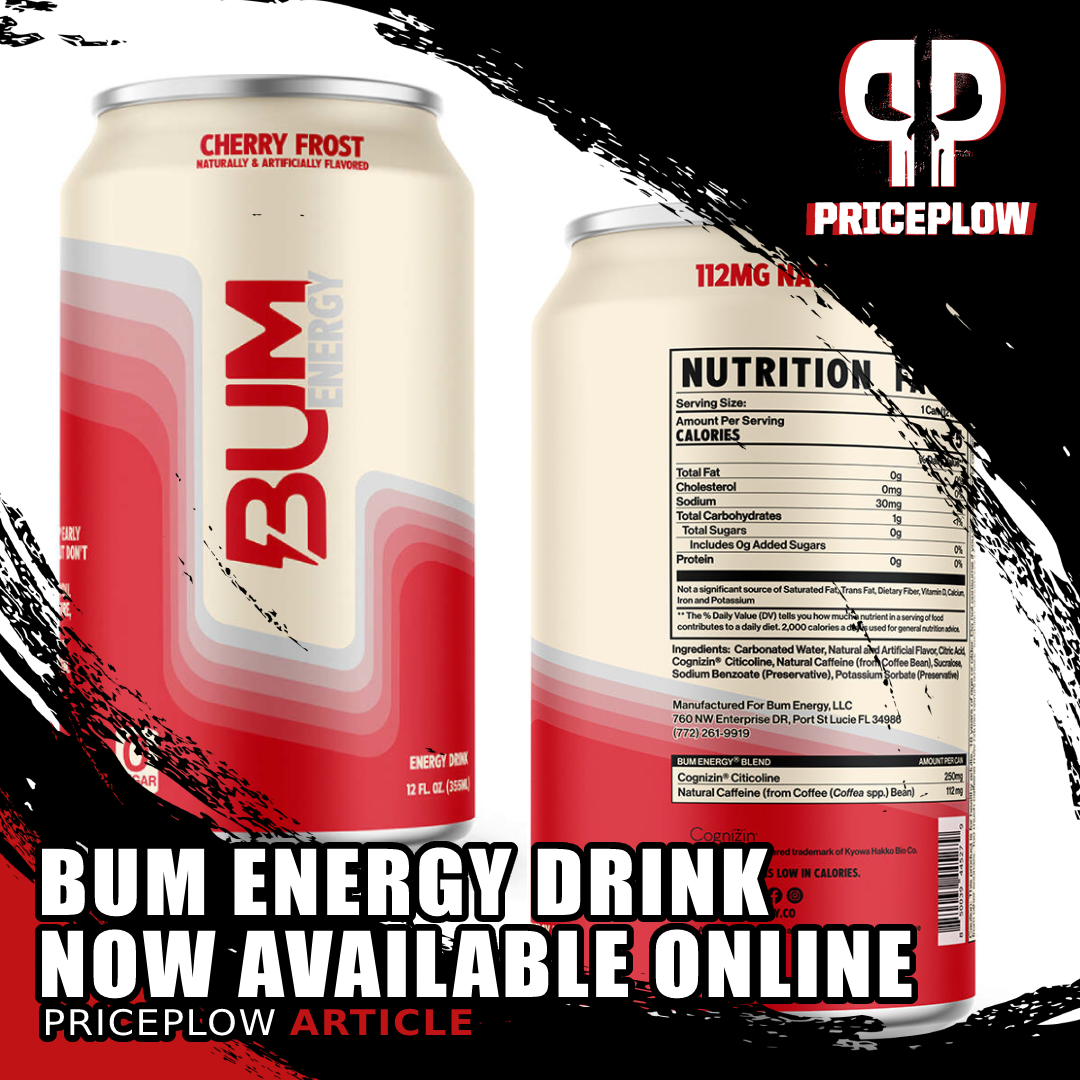
Chris Bumstead's Bum Energy Drink has an even-keeled 112 milligrams of natural caffeine and 250 milligrams of Cognizin.
There are a few key energy drinks and nootropic formulas on the market featuring at least 250 milligrams of Cognizin:
- Pre-Workout: Any stimulant-based RYSE SUPPS Pre-Workout
- Standalone Capsule: Swanson Cognizin Citicoline
- Gaming Supplement: Ghost Gamer
- Energy Drink: BUM Energy
- Energy Drink: C4 Smart Energy
- Energy Shot: Onnit Alpha Brain Focus Shot
When we originally wrote this article, there were suprisingly no pre-workout supplements with a full clinically-supported dose of Cognizin inside. Late in 2023, RYSE Supps solved that problem, adding it to their entire stimulant-based pre-workout lineup!
Cognizin: Enhance Your Brain’s Potential with Citicoline
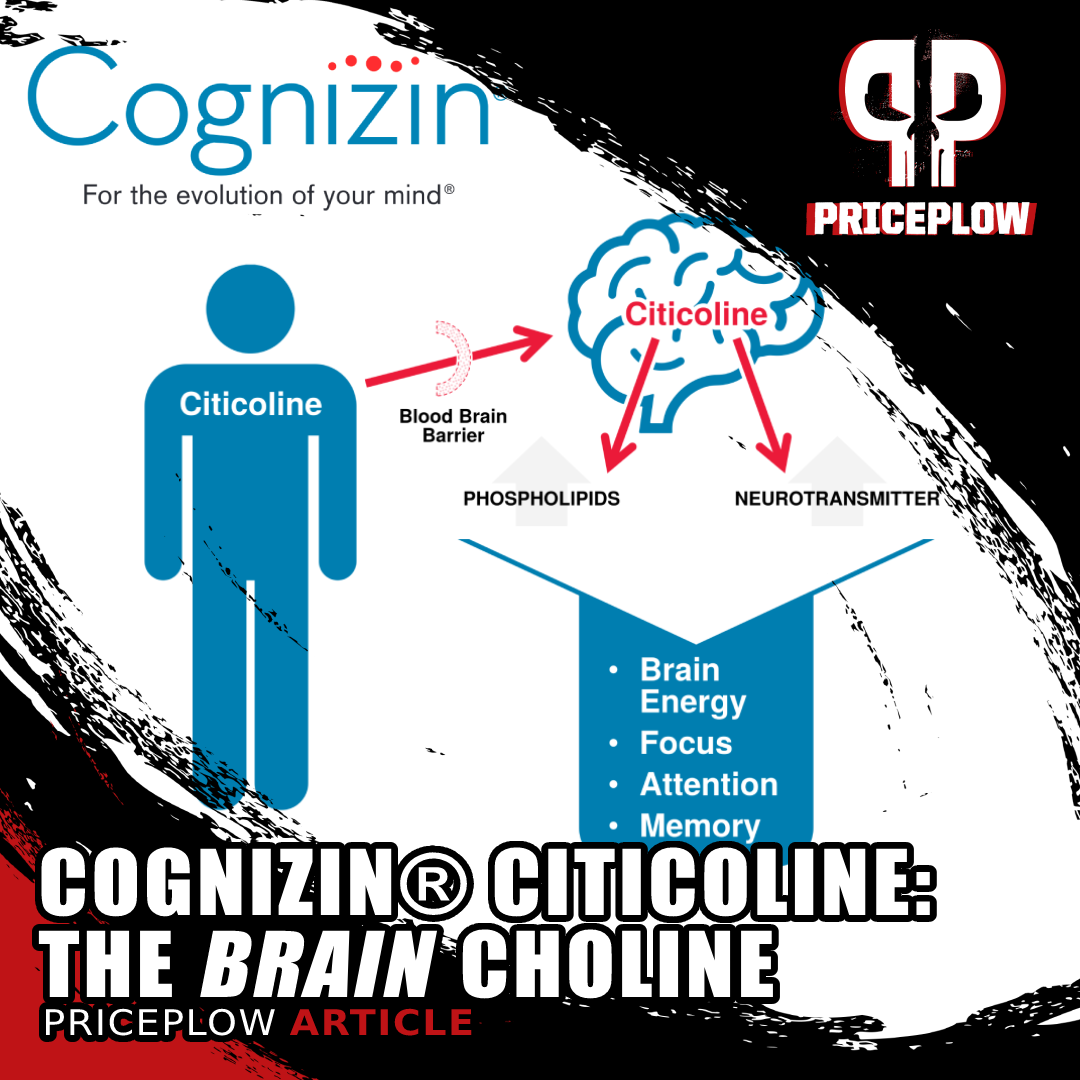
Cognizin® Citicoline is dubbed the The Brain Choline not just because it provides choline, but because it also supplies cytidine, which is also needed for the synthesis of phosphatidylcholine
We've been covering choline-based dietary supplements for well over a decade now, and time and time again, we come to the same conclusion: citicoline is the choline source we anecdotally feel the most.
Now that we've finally dug deep into the mechanisms behind citicoline and the research performed with it, the experiential feeling we get when taking Cognizin makes complete sense. Our next hope is that we see more pre-workout supplements with a full 250 or even 500 milligram doses of Cognizin over the next year or two - then we'll really be zoned in.
Between its ability to upregulate dopamine and also provide cytidine, it's no surprise that we keep coming back to citicoline... and when it comes to trusted and tested sources of citicoline, Cognizin is the form to try.
You can sign up for our Cognizin and Kyowa Hakko alerts below to stay tuned to more news and more supplements containing the ingredient:
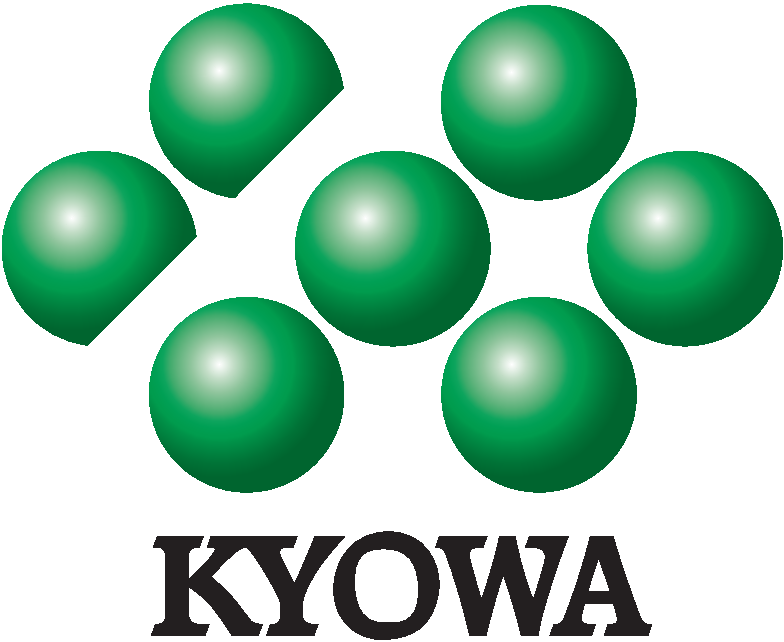
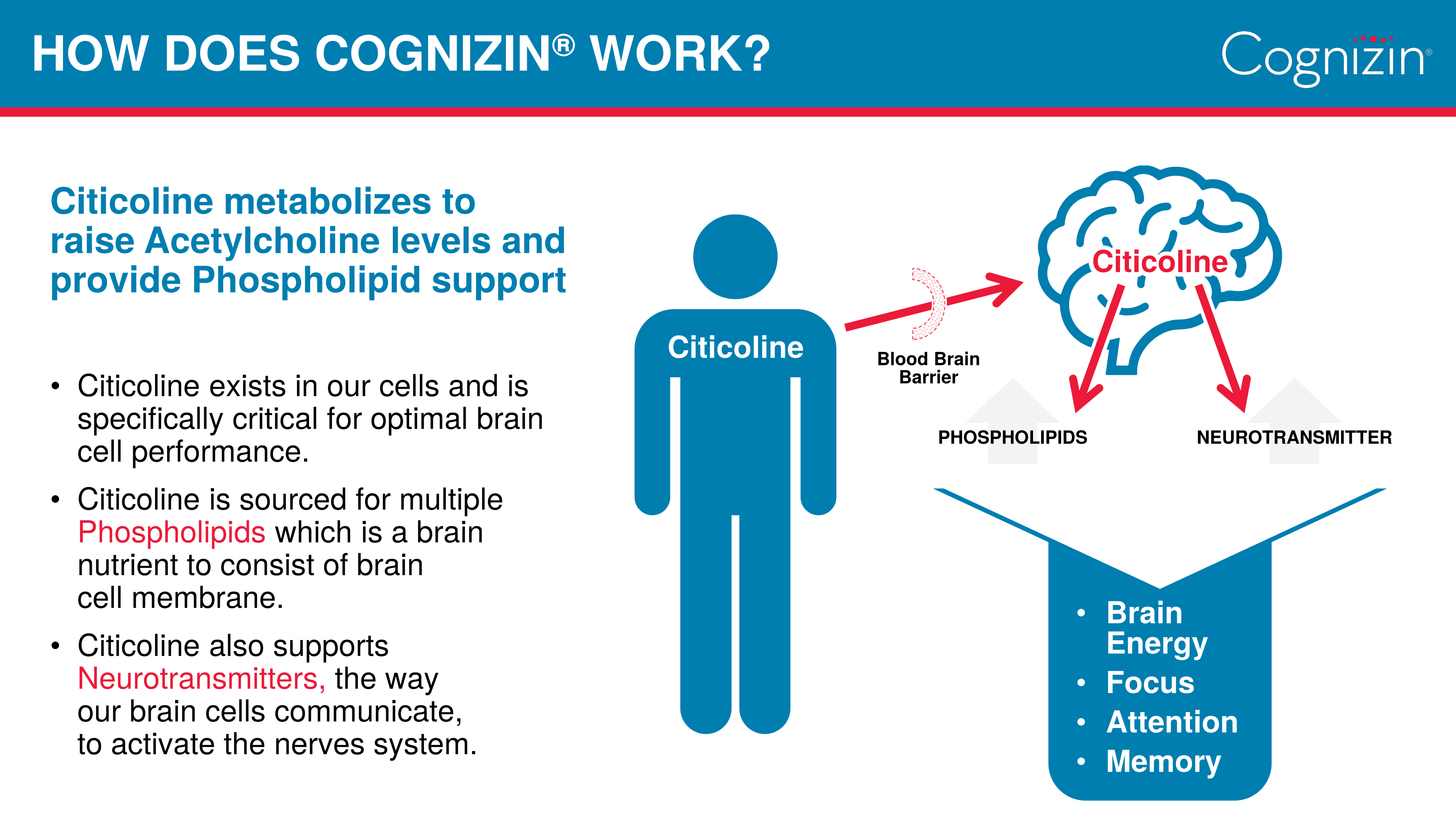

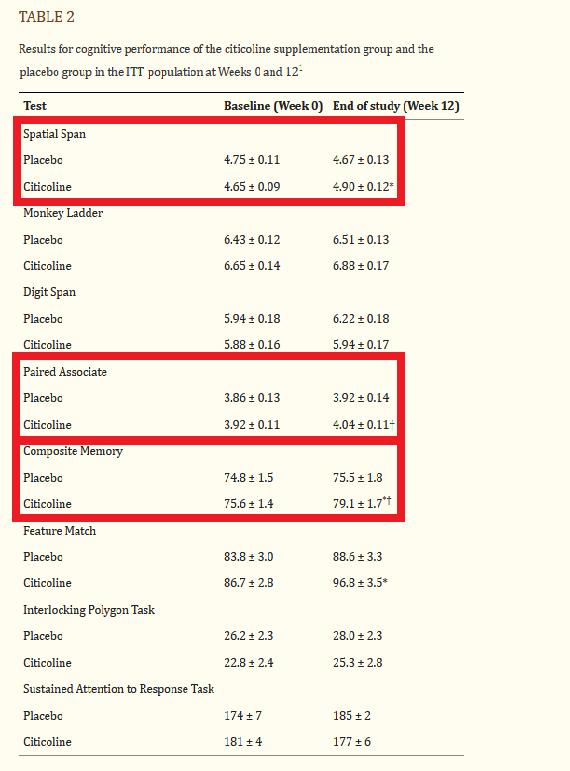
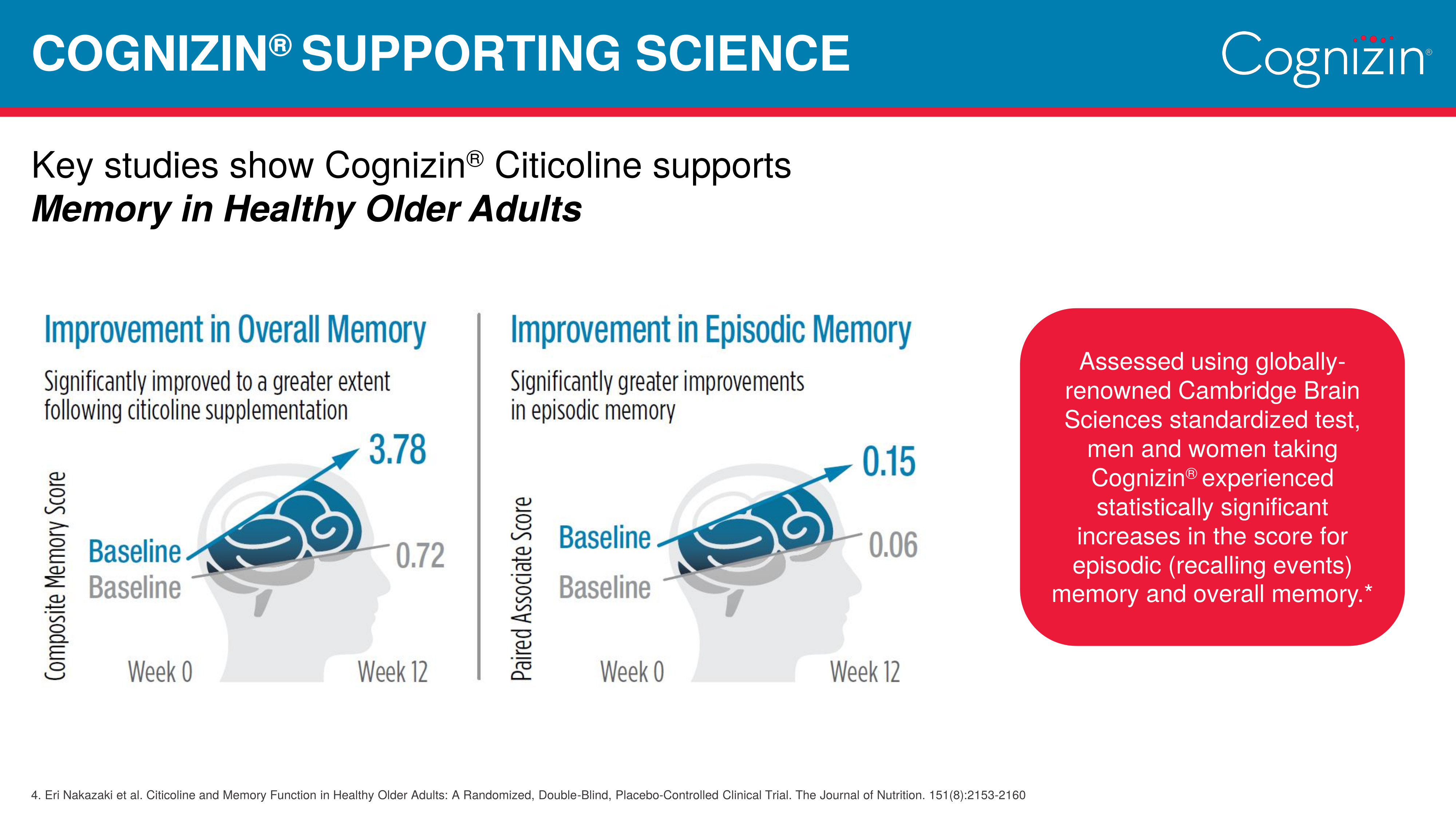
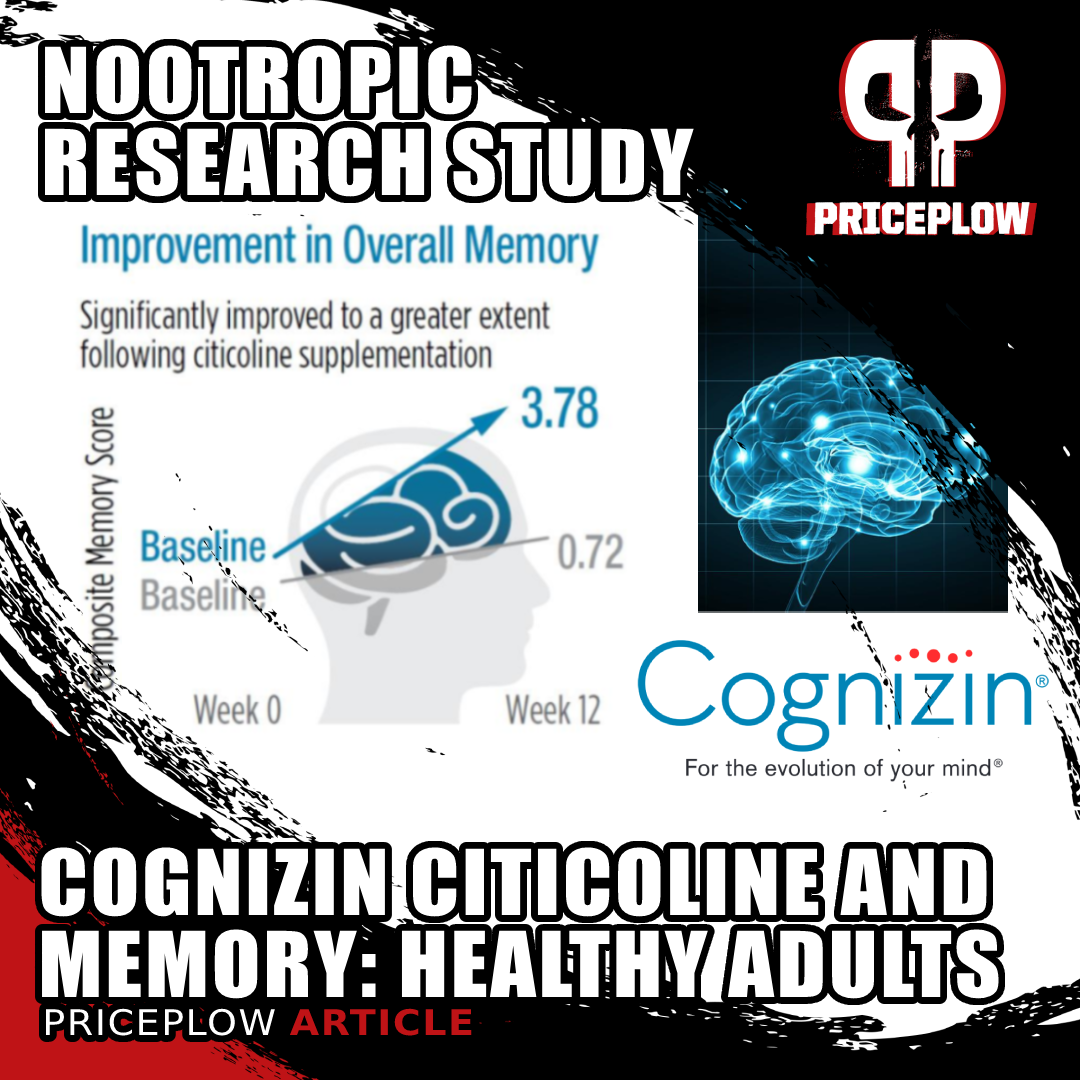
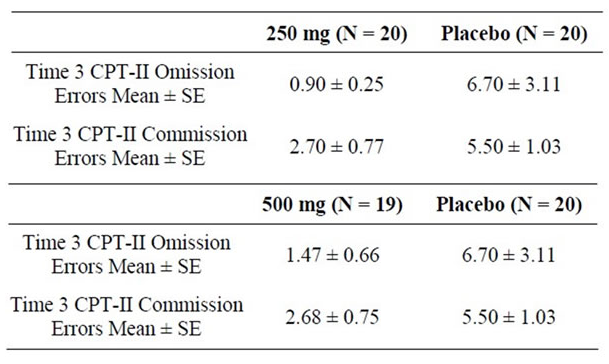
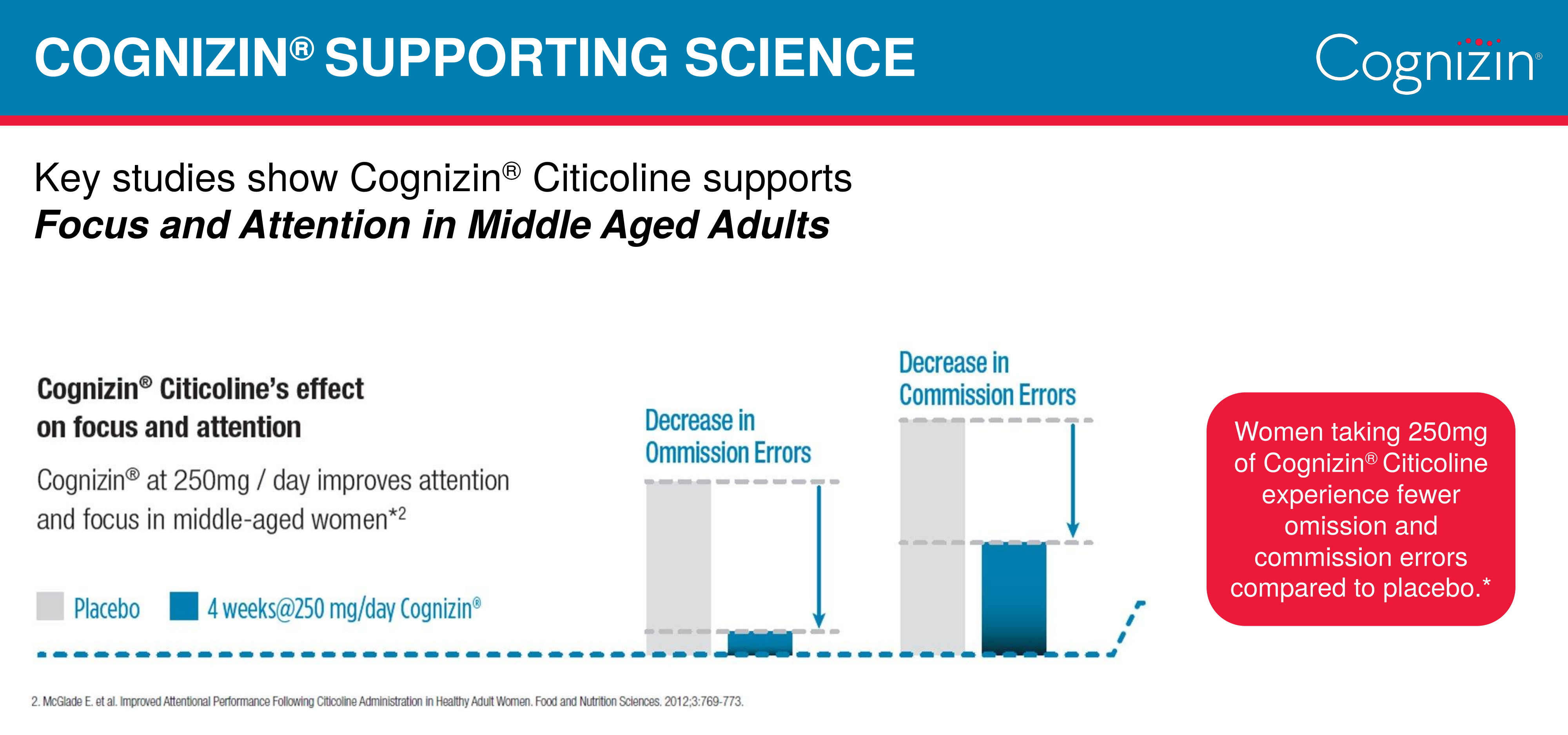
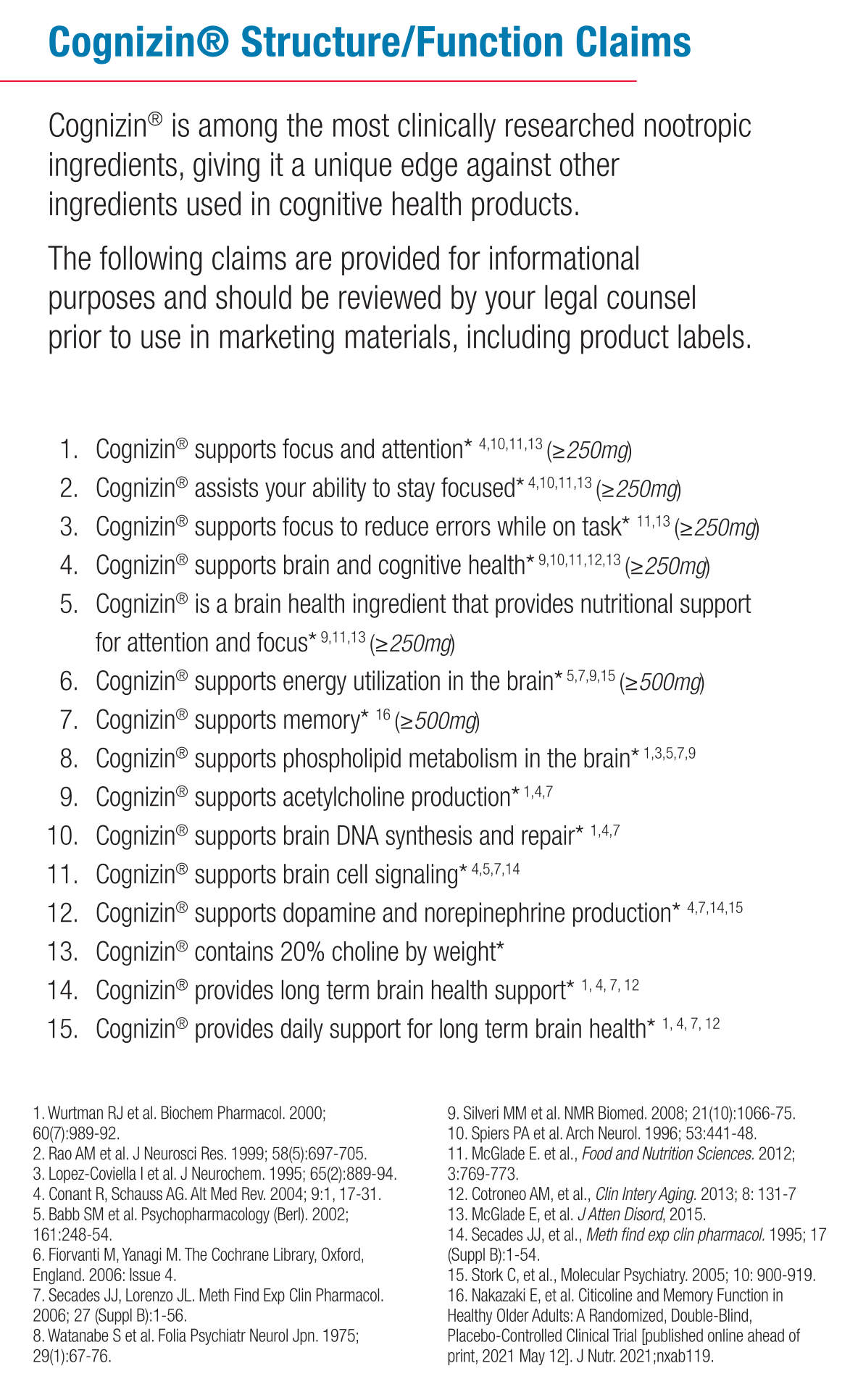


Comments and Discussion (Powered by the PricePlow Forum)